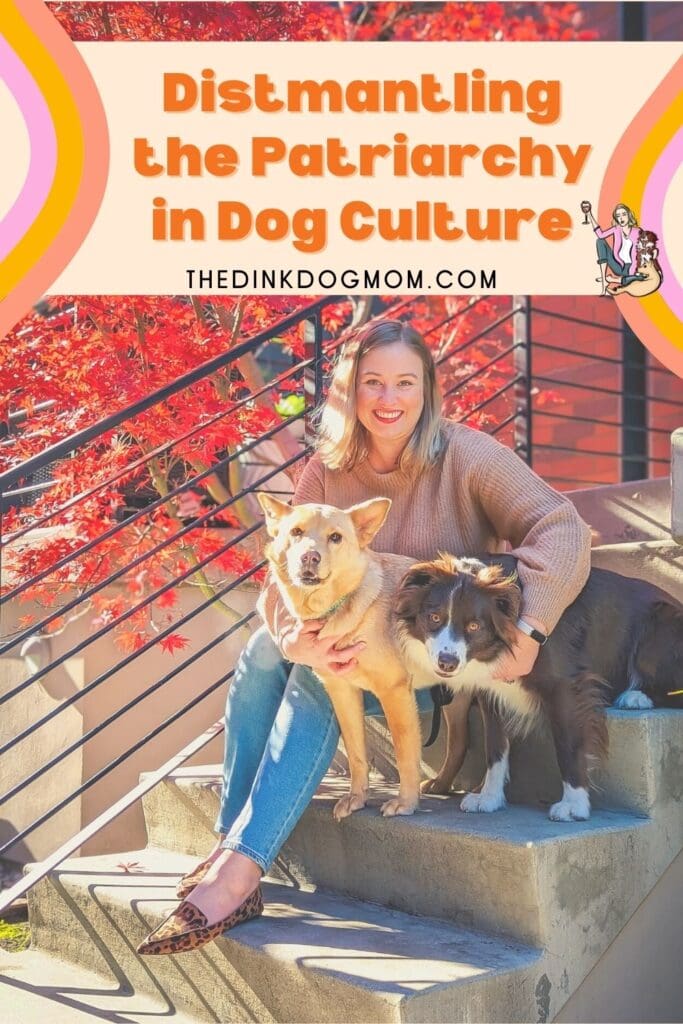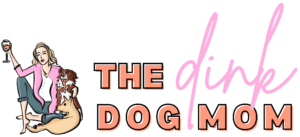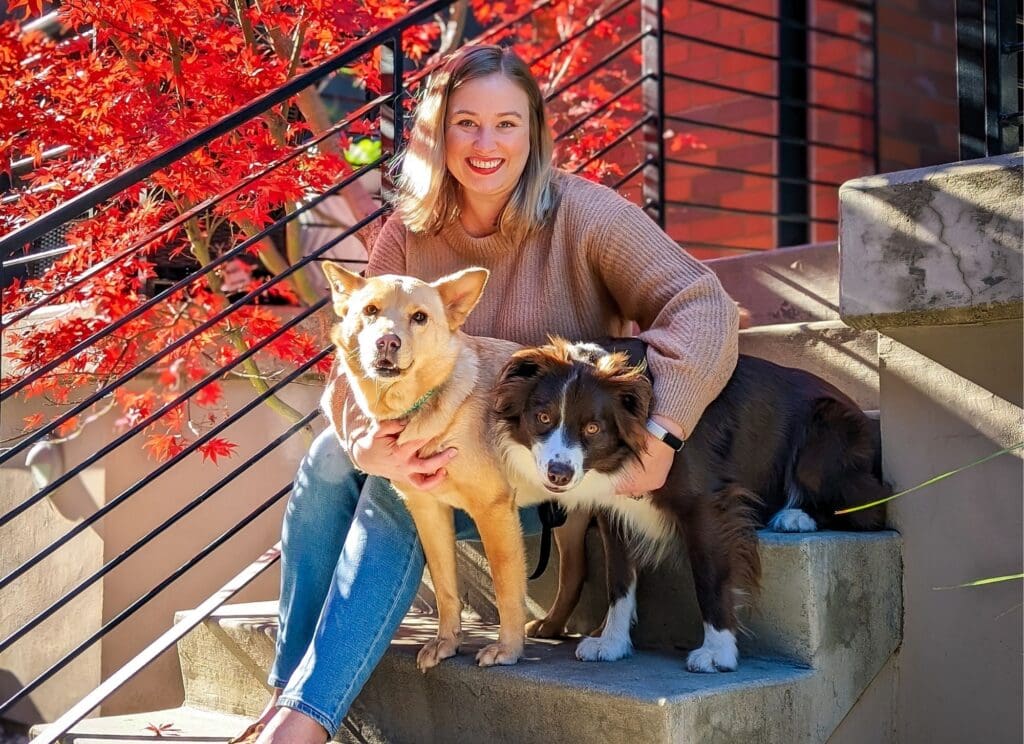March is International Women’s Month, so I thought it would be the perfect time to share some thoughts I’ve been mulling over on the Patriarchy in dog culture. This is a pretty big topic, and this post is not meant to be an authority on the subject. Rather, these are my own thoughts, informed by the research of others as well as my personal experiences.
The Patriarchy, capital P, is fully present in dog culture, from the language we use to talk about dogs to how we interact with them. There are a few reasons I want to address this topic, and why I thought it would be useful for dog moms. One, the Patriarchy is damaging. It hurts us (humans) and it hurts our dogs. Two, Patriarchal influence in dog culture limits our relationship with our dogs, and my goal is to always help you live your fullest dog mom life. Lastly, any area where we can begin to dismantle the Patriarchy weakens the system as a whole, and that’s a win in my book.
A Quick Note on Gendered Language
Before we dive in, I want to clarify some of the language used in this post. I use a lot of gendered terms like female and male, woman and man, and feminine and masculine. When I use these words, I am not talking about gender identity, but rather attributes, traits, or characteristics associated with each end of the gender spectrum. For example, things like hierarchy, control, and order are associated with male/masculine while things like community, collaboration, and nature are associated with female/feminine.
These traits are not mutually exclusive, nor are they static. They also do not fall into a hierarchy of their own where one is better than the other, and the urge to rank these traits as better or worse or right or wrong is a symptom of the Patriarchy itself.
If you are interested in this topic, I highly recommend the book Dance of the Dissident Daughter by Sue Monk Kidd.
So, What is the Patriarchy?
The Patriarchy is a pervasive system of relationships, beliefs, and values embedded in political, social, and economic systems that structure and codify gender inequality. In this system, attributes seen as “feminine” or pertaining to women are undervalued, while attributes regarded as “masculine” or pertaining to men are privileged (X).
This culture very much centers MALE as the valued default, while female is always seen as “other” and therefore less than. This means masculine values and attributes typically dominate throughout our culture while feminine values and attributes are seen as soft, weak, or even irrelevant.
For example, our culture is deeply hierarchical by nature. We are inclined to organize everything into a superior/inferior hierarchy from race, gender, religion, income, and nationality to height, weight, professional occupation, class, and more. Our culture idolizes power, rationality, and order (all considered masculine attributes), while equity, intuition, and nature are seen as silly, froo-froo, or even dangerous.
The Patriarchy places the straight, white male at the very top of this hierarchy, and then all others are organized– in a hierarchy– beneath them. That hierarchy is based on how well an “other” fits into the white male’s story. For example, if a woman is compliant and quiet and serves the man, then she is “good” or “better” than the woman who does her own thing. If a black man follows the rules and norms of a white man, he is “good” or “better” than the black man who doesn’t.
This makes the white male story the ONLY story, and all others become supporting characters. What those supporting characters want or need is often irrelevant in this system unless they center the “main” character.
Because the Patriarchy is a pervasive system of relationships, beliefs, and values, this hierarchical mindset is adopted by almost everyone. It becomes the paradigm we all follow for ourselves, and at it’s core, it is a self-centered mindset. Inevitably, we place ourself at the top, and everyone else becomes a supporting character.
A more feminine mindset, and indeed the way women tend to relate to each other, is collaborative and communal rather than hierarchical. In other words, we are all main characters building a story together, and everyone’s thoughts, needs, and emotions contribute to that story.
How does the Patriarchy show up in dog culture?
The Patriarchy shows up in dog culture everywhere. This is evident in the language we use when talking about the human/dog relationship.
Language is great, because it functions like a mirror to society. The words we use reflect how we interpret, organize, and structure the world around us. In dog culture, we have words like master, command, owner, obedience, and control. Most people’s idea of a “good” dog is an obedient dog who is under the control of its master or owner.
In a way, this makes sense. Dogs were domesticated and bred to be used by humans to accomplish human goals such as hunting, herding, tracking, transportation, and even companionship. It makes sense, therefore, that we have this idea that dogs exist to serve human needs.
However, framing the human/canine relationship in this way glosses over the fact that dogs are sentient creatures with thoughts, emotions, and personalities all their own. It sets up an expectation that dogs will do whatever we want them to, which damages, or at the very least hinders, our relationship with our dogs.
Our Patriarchal Expectations of Dogs
As outlined above, the expectation of the human/canine relationship is that humans are the “masters” and dogs live to serve them. A “good” dog does whatever the human wants without complaint or confusion, and a “bad” dog does, well, anything else. This is the Patriarchal paradigm.
People expect dogs to behave the way we want them to, which includes, but is not limited to:
- Learning commands quickly and following them flawlessly in all environments.
- Happily (but politely!) greeting other people
- Playing well with other dogs.
- Not eliminating indoors, barking, chewing, jumping, or getting on furniture.
When dogs do not align with these expectations, they are punished (or “corrected”) for it. Some are dumped at shelters. They are labeled as “bad dogs.”
We simply don’t expect dogs to have thoughts, behaviors, and emotions of their own that conflict with ours. Or, they are seen as less important than what the human wants. Instead of taking our dog’s thoughts, behaviors, and emotions into the overall equation of sharing a happy life together, many people continue to focus ONLY on their human needs by trying to “fix” their dog.
Again, these expectations are reflected in our language. Words like “owner” and “command” shape and reinforce our perspectives and our expectations whether we think about it or not. Our needs and wants are centered as the only thing that matters. This is a serious lack of empathy, and it negatively impacts our relationship with our dogs.
Patriarchal Power Dynamics
The power dynamics of the human/canine relationship is most often one of superior/inferior. Humans are superior, dogs are inferior. The result of this dynamic is that we approach our dogs with the mindset that we are in charge, and what we want/need is “right.” If our dogs do not align with that, then they are “wrong.” Of course, the critical flaw here is that the moral concept of right and wrong doesn’t even exist for dogs.
That said, we are ultimately the responsible party, but that doesn’t mean we are the superior party. Being in charge is one thing. Forcing everyone around you to do what YOU want to fulfill YOUR needs is something else entirely.
Even worse, some people claim that dogs “need” to serve humans; that they “crave” it.
This gets very twisted very quickly.
Even the most biddable dog, which means a dog that instinctively wants to “do as it is told,” has thoughts and emotions that should be respected. Dogs may thrive with leadership and crave “work,” but that is not the same thing as needing to be forced into doing whatever the human wants.
Dismantling Patriarchy in Dog Culture
In an ideal world, there would be equity and balance between masculine and feminine. Although we often think of masculine and feminine as a mutually exclusive binary (an either/or situation), this is a false dichotomy. All humans, regardless of biological sex or gender identity, can have masculine AND feminine traits. In fact, masculine and feminine traits are both valuable and important.
One of the easiest places to start distmantling the Patriarchy as a dog mom is simply adjusting your language. Using words like “dog guardian” instead of “dog owner” and “cue” instead of “command” are small actions that start shifting how we view our relationship with our dogs and what our expectations are. The next step is to practice listening to our dogs. Learn more about how dogs communicate, what their body language means, and then prioritize your dog’s comfort. If they are clearly uncomfortable at the dog park, don’t take them to the dog park.
Lastly, we must adjust our expectations. Instead of centering the human’s needs/wants as the only needs/wants on the table, let’s take into account our dog’s needs and wants, too. Instead of expecting dogs to fit seamlessly into our world, how can we shape our world to better accomodate our dogs? That could look like not taking your dog to crowded places if people stress them out, or finding less crowded parks to walk through.
Now, I’m not saying we should throw the human world out the window and it should be all about the dogs; this is not an “either/or” conversation, remember?
What I am saying is that if we are going to choose to share our life with a dog, then we need to share it, not dominate it. Raising a happy dog is about finding the intersection between our human wants/needs and our dogs’ wants/needs, and then maintaining a respectful balance between the two.
A Better Life with Your Dog
When the human’s wants and needs are the only wants and needs considered, our dogs suffer. They are put in situations where they are deeply uncomfortable. Their natural forms of communication– barking, whining, growling, baring teeth, hiding– are punished and therefore silenced. Often, “owners” can become a source of fear and uncertainty for a dog, and how far do you think a relationship can grow when it is based in fear?
Not only does this limit our relationship with our dogs, it is also an expression of a system that oppresses and marginalizes people who do not identify as masculine male every single day. When we dismantle the Patriarchy in dog culture, we not only dismantle it from one area of our lives, which weakens the system as a whole, but we also deepen our relationship with our dogs and ensure they are living their best life, too.
Lastly, if all of this sounds a little ridiculous, it’s because the Patriarchy says collaboration is ridiculous. Remember, the Patriarchy is based on hierarchy, and the ultimate goal is always to climb your way to the top, often at the expense of others. Collaboration is brushed off as “soft” or “silly.” Compassion is often conflated with weakness.
But the truth is, a relationship that is built on compassion, communication, and collaboration is healthy while a relationship built on control, power, and dominance is abusive.






